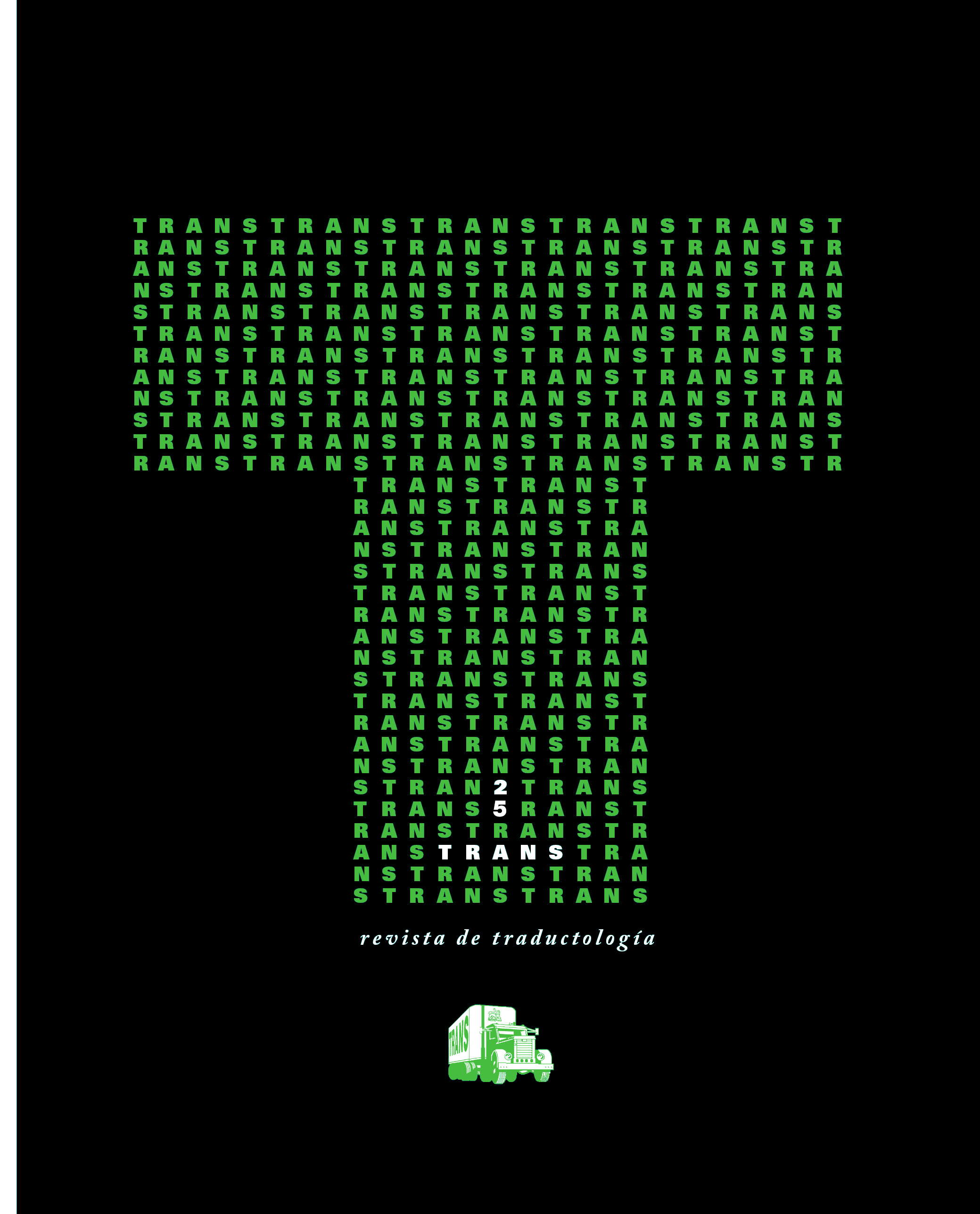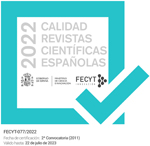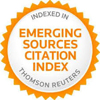And the Machines Started Translating... Didactic Considerations in Relation to the Automatic Translation of Cultural References in the Legal Field
DOI:
https://doi.org/10.24310/TRANS.2021.v1i25.11978Keywords:
DeepL, specialized translation, cultural references, didactic considerationsAbstract
This In this contribution we will highlight the vulnerability of DeepL in relation to the automatic translation of cultural references in the legal field into Spanish, specifically the German legal term Landgericht. Inconsistencies at the semantic level mostly occur because the tool works from a sentence approach instead of a textual one. For this reason, we will give some didactic guidelines on how to deal with this problem in the classroom, especially in the post-editing phase. In this sense, we focus on four specific criteria: the material criterion, the composition criterion, the hierarchical criterion and the territorial criterion, and complete them with a multilevel textual analysis of the textual class in question (apostille). The ultimate aim is to offer the student a very complete guide so that he or she can face this challenge with guarantees. This is the partial result of a teaching innovation project led by the author of this article.
Downloads
Metrics
Publication Facts
Reviewer profiles N/A
Author statements
Indexed in
-
—
- Academic society
- N/A
- Publisher
- Universidad de Málaga
References
Aguilar Canal, Enrique (2019): Evaluación de la calidad del traductor automático DeepL del inglés al español en textos especializados, Lima: Tesis doctoral, Universidad César Vallejo. <http://repositorio.ucv.edu.pe/bitstream /handle /UCV/39871/Aguilar_CEO.pdf?sequence=1&isAllowed=y>. [Consulta: 13-XI-2020].
Bezirksregierung Köln (2021): «Apostillen», <https://www.bezreg-koeln.nrw.de/brk_internet/leistungen/abteilung02/21/apostillen/index.html>. [Consulta: 26-V-2021].
Bielawski, Pawel (2018): «Zur Verständlichkeit von Übersetzungen deutscher und polnischer Gerichtsbenennungen», Comparative Legilinguistics, 34, 65-84. . [Consulta: 21-X-2020].
Cross, Wilburg (1971): Diebold, el impacto de la automática en la sociedad y en la empresa, Salamanca: Ediciones Anaya.
De Groot, Gérard-René (1999): «Recht, Rechtssprache und Rechtssystem. Betrachtungen über die Problematik der Übersetzung juristischer Texte», Terminologie et Traduction, 3, 279-316.
DeepL (2020): «El Traductor de DeepL frente a otros», <https://www.deepl.com/quality.html>. [Consulta: 26-V-2021].
Deutsche Vertretungen in den USA (2021): «Apostille-Behörden in Deutschland», <https://www.germany.info/us-de/service/apostille-behoerde-deutschland/1217158>. [Consulta: 26-V-2021].
Elena García, Pilar; Iris Holl y Silvia Roiss (2013): «Enseñar y aprender a traducir un documento notarial», en Belén Santana López y Críspulo Travieso Rodríguez (eds.), Puntos de encuentro: Los primeros 20 años de la Facultad de Traducción y Documentación de la Universidad de Salamanca, Salamanca: Ediciones Universidad Salamanca, 13-49.
Gambín, José (2017): «DeepL: la nueva herramienta de traducción automática que hace sombra a Google Translator», <https://altraducciones.com/blog/deepl-traduccion-automatica-google-translator>. [Consulta: 20-XI-2020].
Garrido Mayol, Vicente (2003): «Sinopsis artículo 149 – Constitución española», revisado por el equipo de puesta al día del Portal de la Constitución, <https://app.congreso.es/consti/constitucion/indice/sinopsis/sinopsis.jsp?art=149&tipo=2>. [Consulta: 26-V-2021].
Gilles, Peter (1999): «Das Justizsystem in Deutschland», en Institut für Länderkunde Nationalatlas Bundesrepublik Deutschland – Gesellschaft und Staat, Leipzig: Spektrum Akademischer Verlag, 58-59. <http://archiv.nationalatlas.de/wp-content/art_pdf/Band1_58-59_archiv.pdf>. [Consulta: 22-XI-2020].
Holl, Iris (2012): «Técnicas para la traducción jurídica: Revisión de diferentes propuestas, últimas tendencias», Herm?neus, 14, 1-17. <http://www5.uva.es/hermeneus/hermeneus/14/arti07_14.pdf>. [Consulta: 10-XII-2020].
Pastor de Meer, Victoria (2015): La traducción de los órganos jurisdiccionales y del personal judicial de España y Alemania, Alicante: Trabajo Fin de Grado, Universidad de Alicante, <https://studylib.es/doc/7089581/la-traducci%C3%B3n-de-los-%C3%B3rganos-jurisdiccionales-y-el-personal>. [Consulta: 1-XII-2020].
Prieto Ramos, Fernando (2009): «Interdisciplinariedad y ubicación macrotextual en traducción jurídica», Translation Journal, 13/4, <https://translationjournal.net/journal/50legal.htm>. [Consulta: 19-V-2021].
QT21 Consortium (2015): «Multidimensional Quality Metrics (MQM) Definition», <http://www.qt21.eu/mqm-definition/definition-2015-12-30.html#default-value>. [Consulta: 26-V-2021].
Real Academia Española (2017): Diccionario panhispánico del español jurídico, <https://dej.rae.es/lema/apostilla>. [Consulta: 26-V-2021].
Reino de España (1985): «Ley Orgánica 6/1985, de 1 de julio, del Poder Judicial», <https://www.boe.es/buscar/act.php?id=BOE-A-1985-12666&tn=1&p=2012122>. [Consulta: 26-V-2021].
Roiss, Silvia y Petra Zimmermann González (2021): «DeepL y su potencial para el desarrollo de la capacidad de análisis crítico en la clase de Traducción inversa», Herm?neus, 22, 363-382, <https://revista.uva./esindex.php/hermeneus/article/view/3 191>. [Consulta: 16-II-2021].
Soriano Barabino, Guadalupe (2018): «La formación del traductor jurídico: análisis de la competencia traductora en traducción jurídica y propuesta de programa formativo», Quaderns, 25, 217-229, <https://ddd.uab.cat/pub/quaderns/quaderns _a2018n25/quaderns_a2018n25p217.pdf>. [Consulta: 14-V-2021].
Textworks Translations (2021): «DeepL for Academic Translations», <https://www.textworks.eu/eng/deepl-for-academic-translations>. [Consulta: 26-V-2021].
Downloads
Published
How to Cite
Issue
Section
License
All contents published in TRANS. Revista de Traductología are protected under the Creative Commons Attribution-NonCommercial-ShareAlike 4.0 International (CC BY-NC-SA 4.0) license. All about this license is available in the following link: <http://creativecommons.org/licenses/by-nc-sa/4.0>
Users can copy, use, redistribute, share and exhibit publicly as long as:
- The original source and authorship of the material are cited (Journal, Publisher and URL of the work).
- It is not used for comercial purposes.
- The existence of the license and its especifications are mentioned.
- ShareAlike — If you remix, transform, or build upon the material, you must distribute your contributions under the same license as the original.
There are two sets of authors’ rights: moral and property rights. Moral rights are perpetual prerogatives, unrenounceable, not-transferable, unalienable, imprescriptible and inembargable. According to authors’ rights legislation, TRANS. Revista de Traductología recognizes and respects authors moral rights, as well as the ownership of property rights, which will be transferred to University of Malaga in open access.
The property rights are referred to the benefits that are gained by the use or the dissemination of works. TRANS. Revista de Traductología is published in an open access form and it is exclusively licenced by any means for doing or authorising distribution, dissemination, reproduction, , adaptation, translation or arrangement of works.
Authors are responsable for obtaining the necessary permission to use copyrighted images.













21.png)
